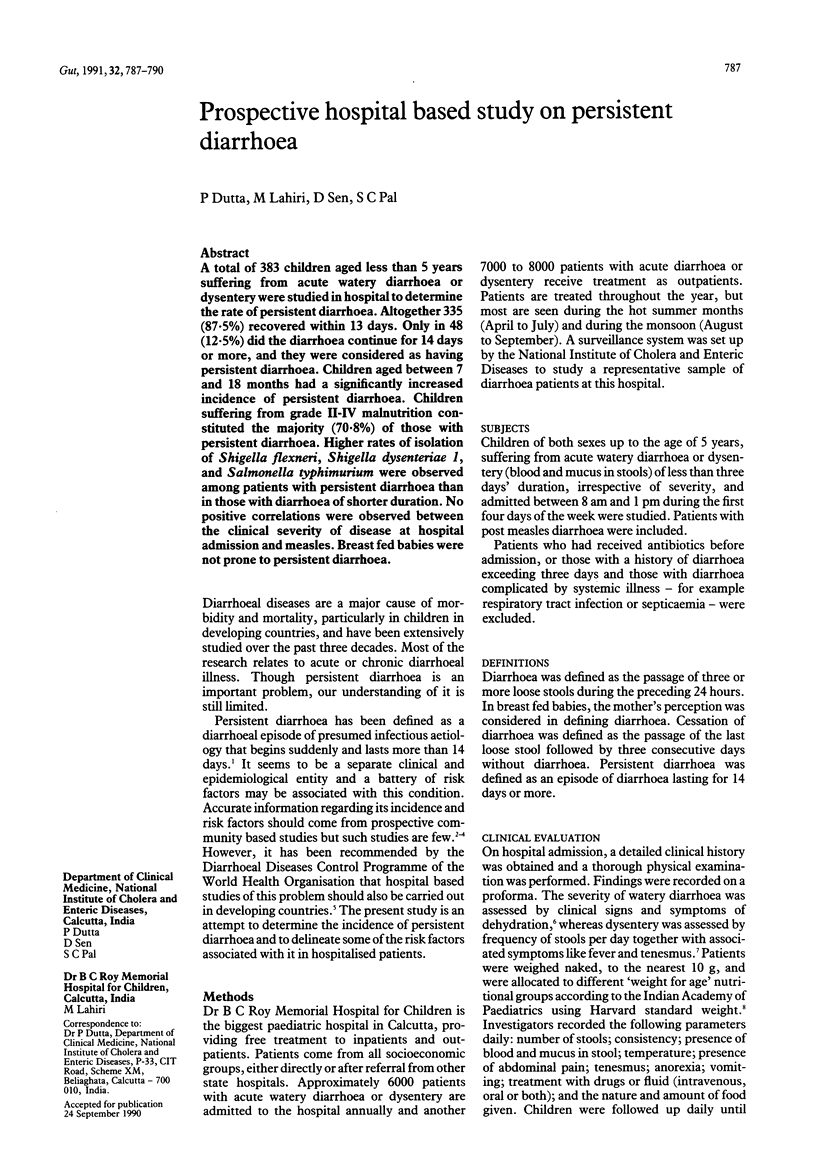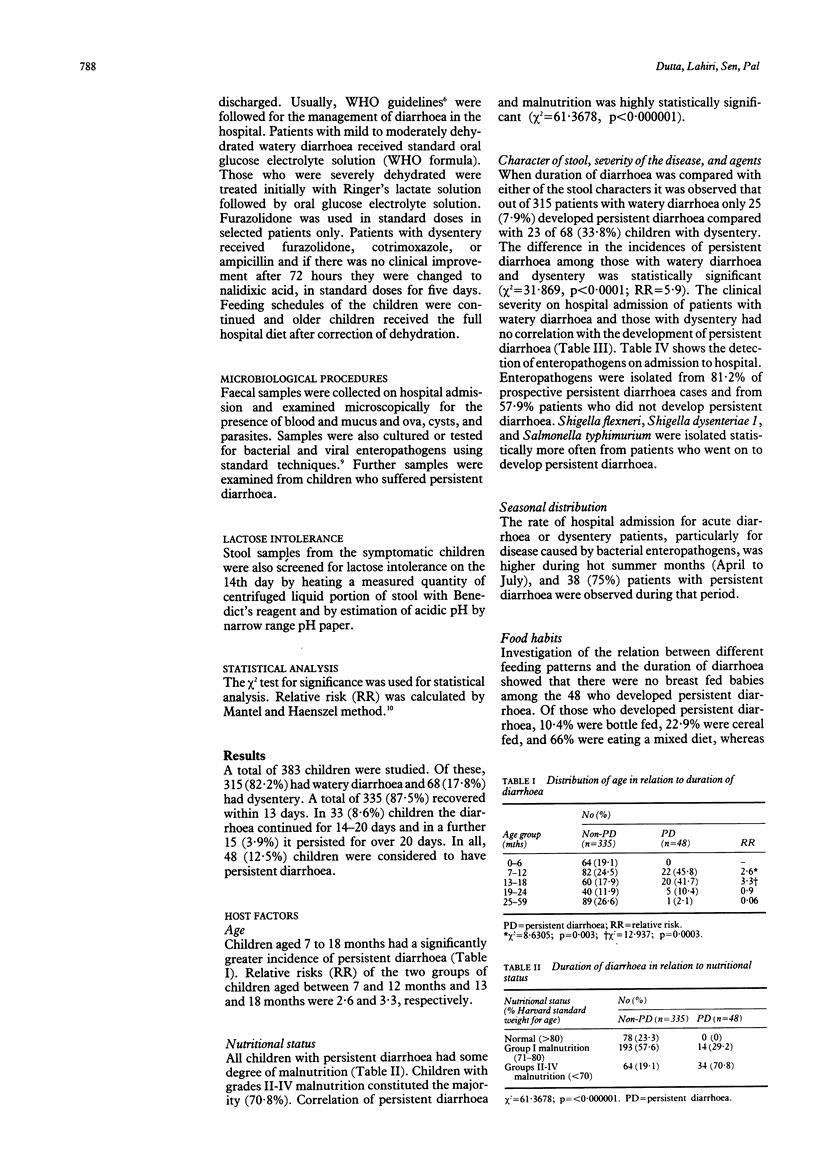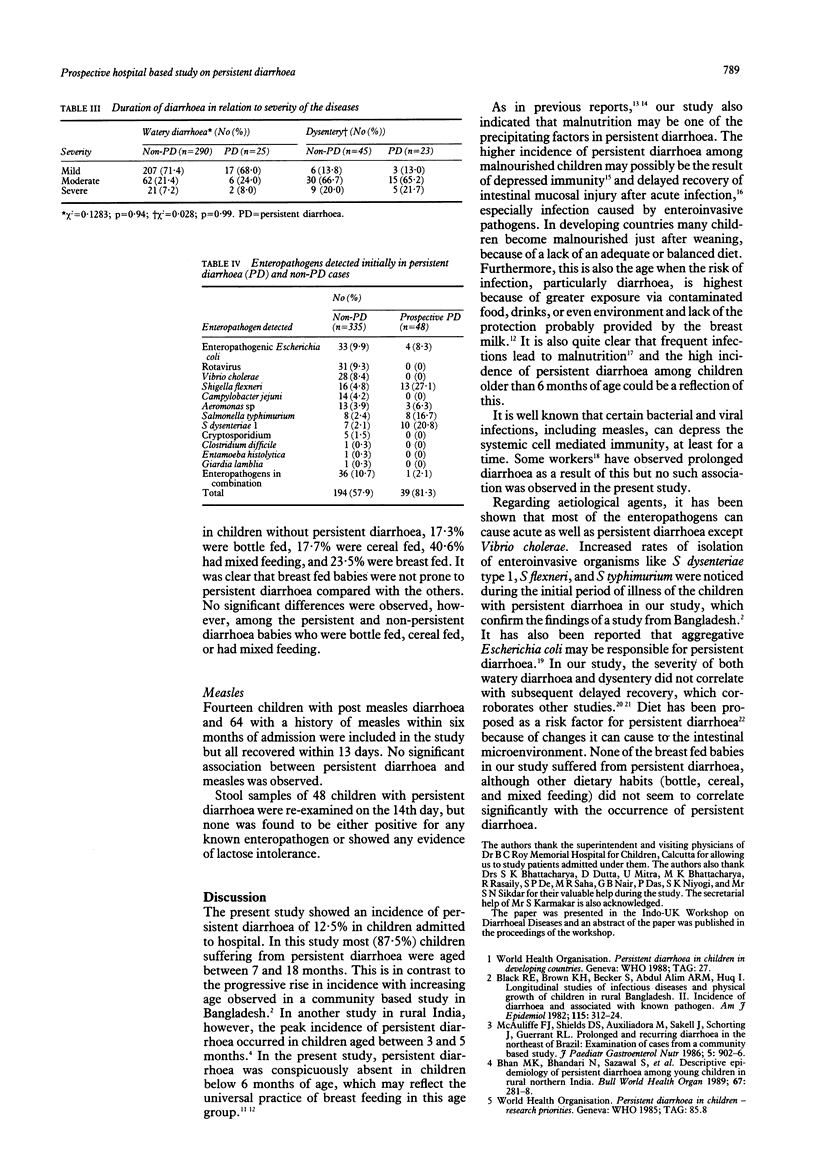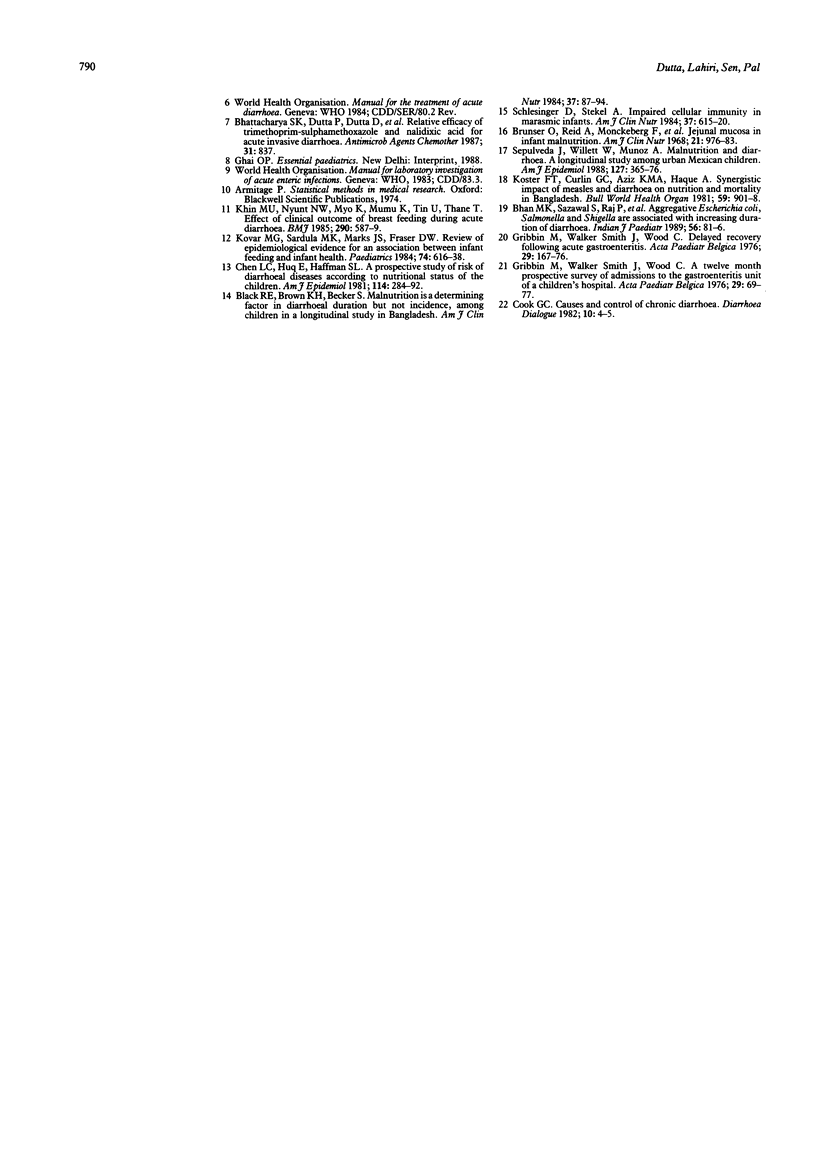Abstract
A total of 383 children aged less than 5 years suffering from acute watery diarrhoea or dysentery were studied in hospital to determine the rate of persistent diarrhoea. Altogether 335 (87.5%) recovered within 13 days. Only in 48 (12.5%) did the diarrhoea continue for 14 days or more, and they were considered as having persistent diarrhoea. Children aged between 7 and 18 months had a significantly increased incidence of persistent diarrhoea. Children suffering from grade II-IV malnutrition constituted the majority (70.8%) of those with persistent diarrhoea. Higher rates of isolation of Shigella flexneri, Shigella dysenteriae 1, and Salmonella typhimurium were observed among patients with persistent diarrhoea than in those with diarrhoea of shorter duration. No positive correlations were observed between the clinical severity of disease at hospital admission and measles. Breast fed babies were not prone to persistent diarrhoea.
Full text
PDF



Selected References
These references are in PubMed. This may not be the complete list of references from this article.
- Bhan M. K., Bhandari N., Sazawal S., Clemens J., Raj P., Levine M. M., Kaper J. B. Descriptive epidemiology of persistent diarrhoea among young children in rural northern India. Bull World Health Organ. 1989;67(3):281–288. [PMC free article] [PubMed] [Google Scholar]
- Bhan M. K., Sazawal S., Raj P., Bhandari N., Kumar R., Bhardwaj Y., Shrivastava R., Bhatnagar S. Aggregative Escherichia coli, Salmonella, and Shigella are associated with increasing duration of diarrhea. Indian J Pediatr. 1989 Jan-Feb;56(1):81–86. doi: 10.1007/BF02749712. [DOI] [PubMed] [Google Scholar]
- Bhattacharya S. K., Datta P., Datta D., Bhattacharya M. K., Sen D., Saha M. R., Nair G. B., Das P., Sikdar S. N., Bose R. Relative efficacy of trimethoprim-sulfamethoxazole and nalidixic acid for acute invasive diarrhea. Antimicrob Agents Chemother. 1987 May;31(5):837–837. doi: 10.1128/aac.31.5.837. [DOI] [PMC free article] [PubMed] [Google Scholar]
- Black R. E., Brown K. H., Becker S. Malnutrition is a determining factor in diarrheal duration, but not incidence, among young children in a longitudinal study in rural Bangladesh. Am J Clin Nutr. 1984 Jan;39(1):87–94. doi: 10.1093/ajcn/39.1.87. [DOI] [PubMed] [Google Scholar]
- Brunser O., Reid A., Monckeberg F., Maccioni A., Contreras I. Jejunal mucosa in infant malnutrition. Am J Clin Nutr. 1968 Sep;21(9):976–983. doi: 10.1093/ajcn/21.9.976. [DOI] [PubMed] [Google Scholar]
- Chen L. C., Huq E., Huffman S. L. A prospective study of the risk of diarrheal diseases according to the nutritional status of children. Am J Epidemiol. 1981 Aug;114(2):284–292. doi: 10.1093/oxfordjournals.aje.a113193. [DOI] [PubMed] [Google Scholar]
- Gribbin M., Walker-Smith J., Wood C. A twelve month prospective survey of admissions to the gastroenteritis unit of a children's hospital. Acta Paediatr Belg. 1976 Apr-Jun;29(2):69–77. [PubMed] [Google Scholar]
- Gribbin M., Walker-Smith J., Wood C. Delayed recovery following acute gastroenteritis. Acta Paediatr Belg. 1976 Jul-Sep;29(3):167–176. [PubMed] [Google Scholar]
- Khin M. U., Nyunt-Nyunt-Wai, Myo-Khin, Mu-Mu-Khin, Tin U., Thane-Toe Effect on clinical outcome of breast feeding during acute diarrhoea. Br Med J (Clin Res Ed) 1985 Feb 23;290(6468):587–589. doi: 10.1136/bmj.290.6468.587. [DOI] [PMC free article] [PubMed] [Google Scholar]
- Koster F. T., Curlin G. C., Aziz K. M., Haque A. Synergistic impact of measles and diarrhoea on nutrition and mortality in Bangladesh. Bull World Health Organ. 1981;59(6):901–908. [PMC free article] [PubMed] [Google Scholar]
- McAuliffe J. F., Shields D. S., Auxiliadora de Sousa M., Sakell J., Schorling J., Guerrant R. L. Prolonged and recurring diarrhea in the northeast of Brazil: examination of cases from a community-based study. J Pediatr Gastroenterol Nutr. 1986 Nov-Dec;5(6):902–906. doi: 10.1097/00005176-198611000-00014. [DOI] [PubMed] [Google Scholar]
- Sepúlveda J., Willett W., Muñoz A. Malnutrition and diarrhea. A longitudinal study among urban Mexican children. Am J Epidemiol. 1988 Feb;127(2):365–376. doi: 10.1093/oxfordjournals.aje.a114810. [DOI] [PubMed] [Google Scholar]


